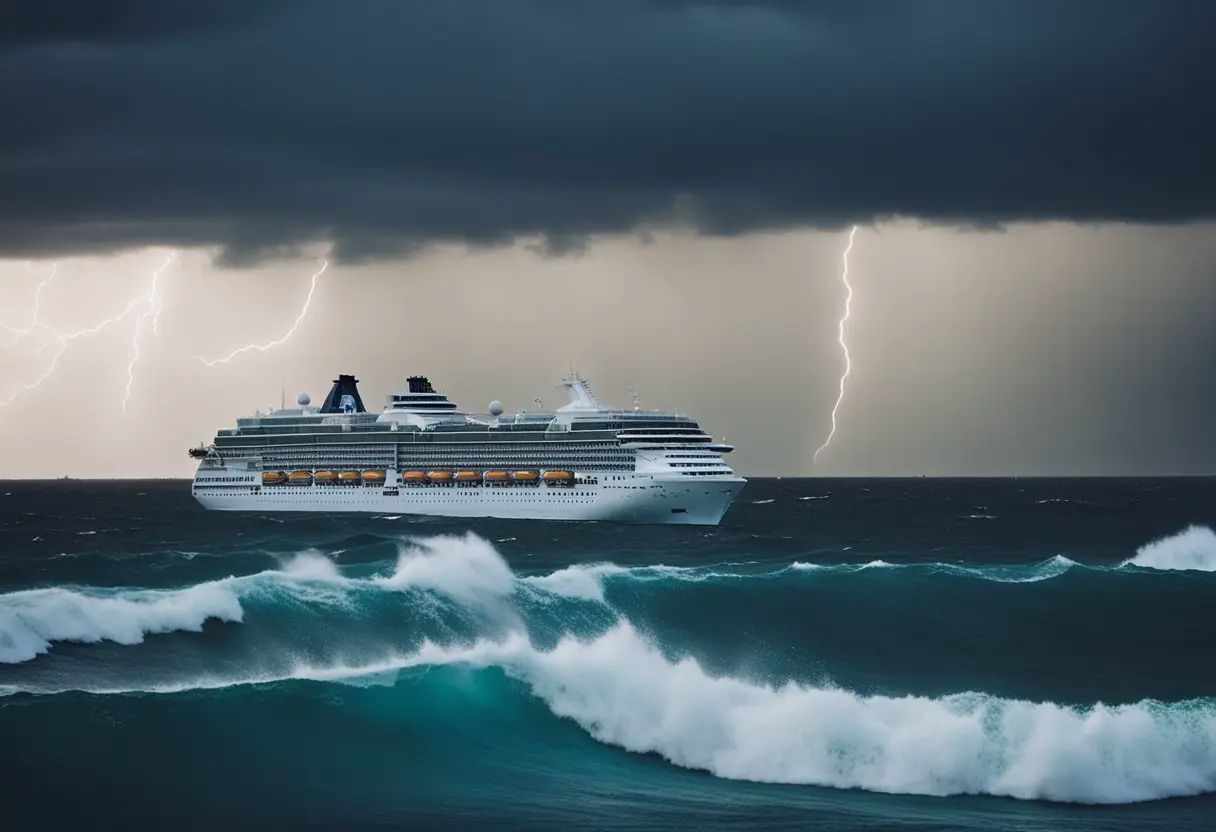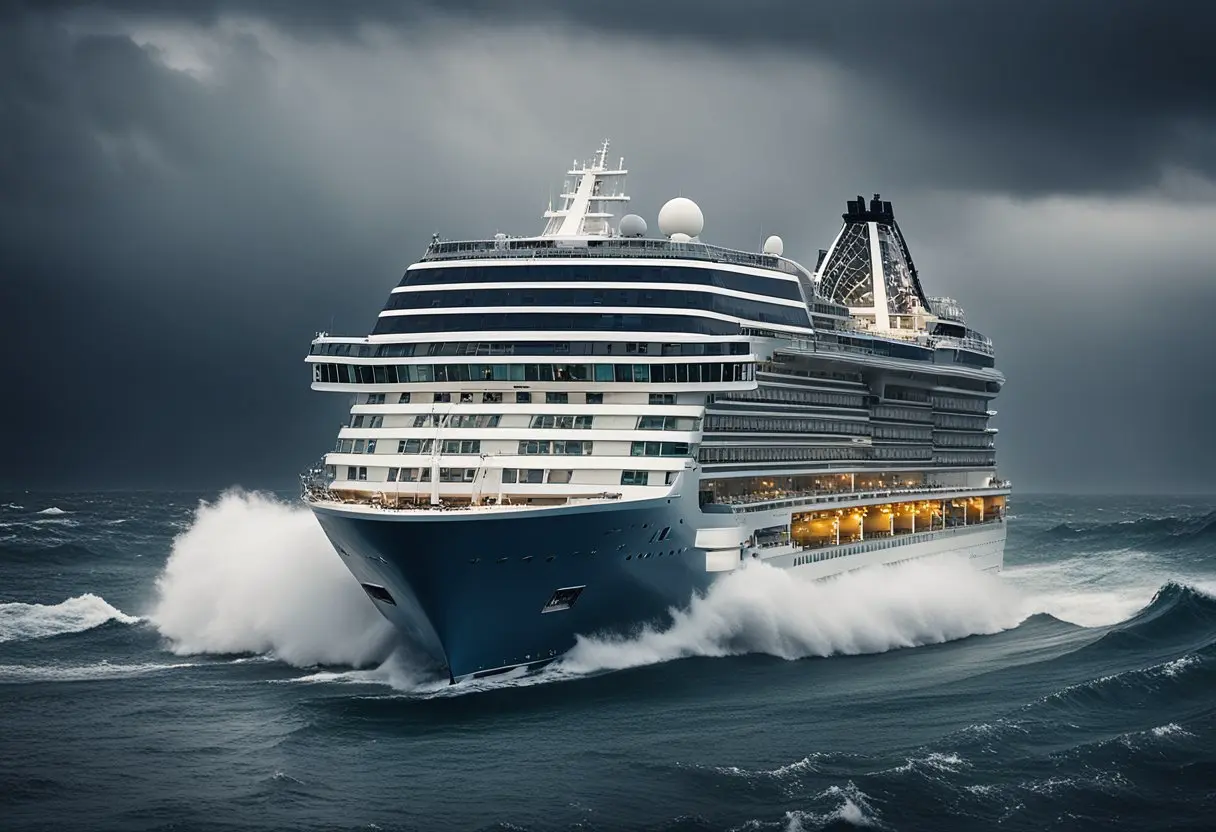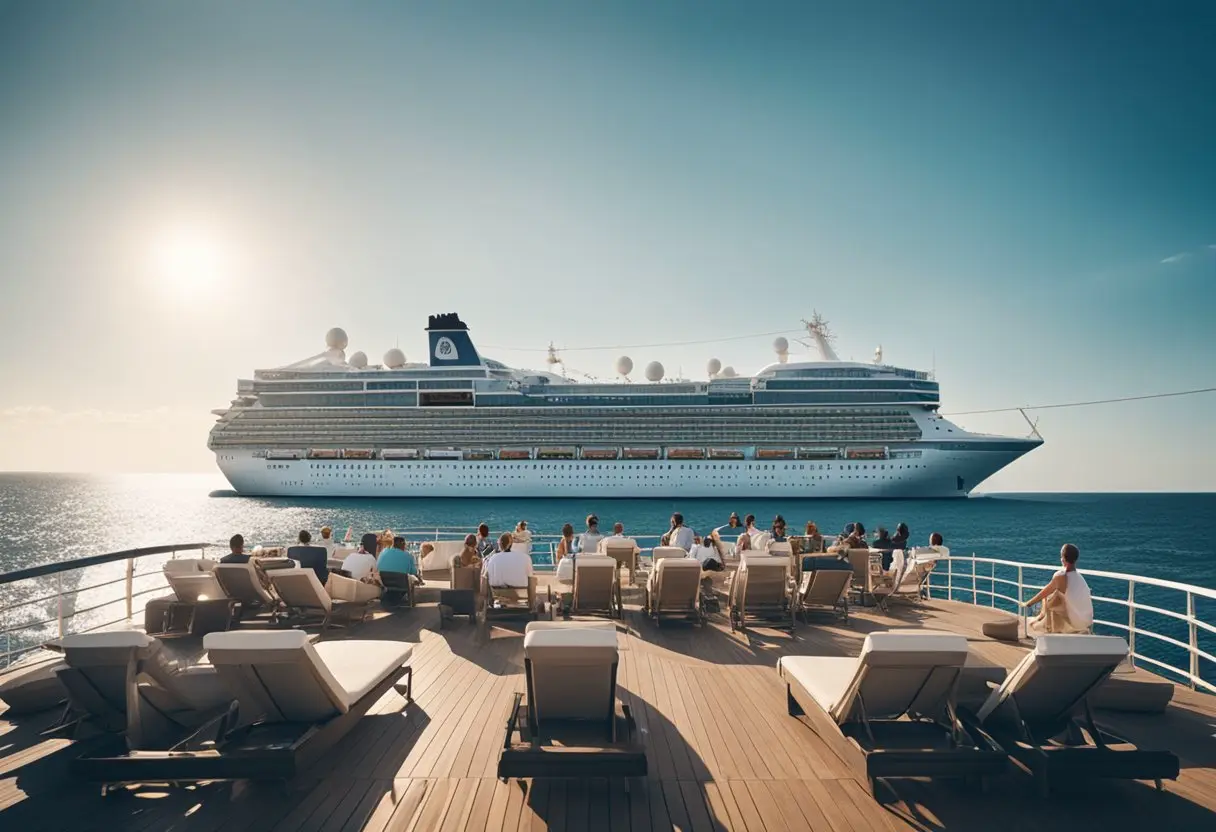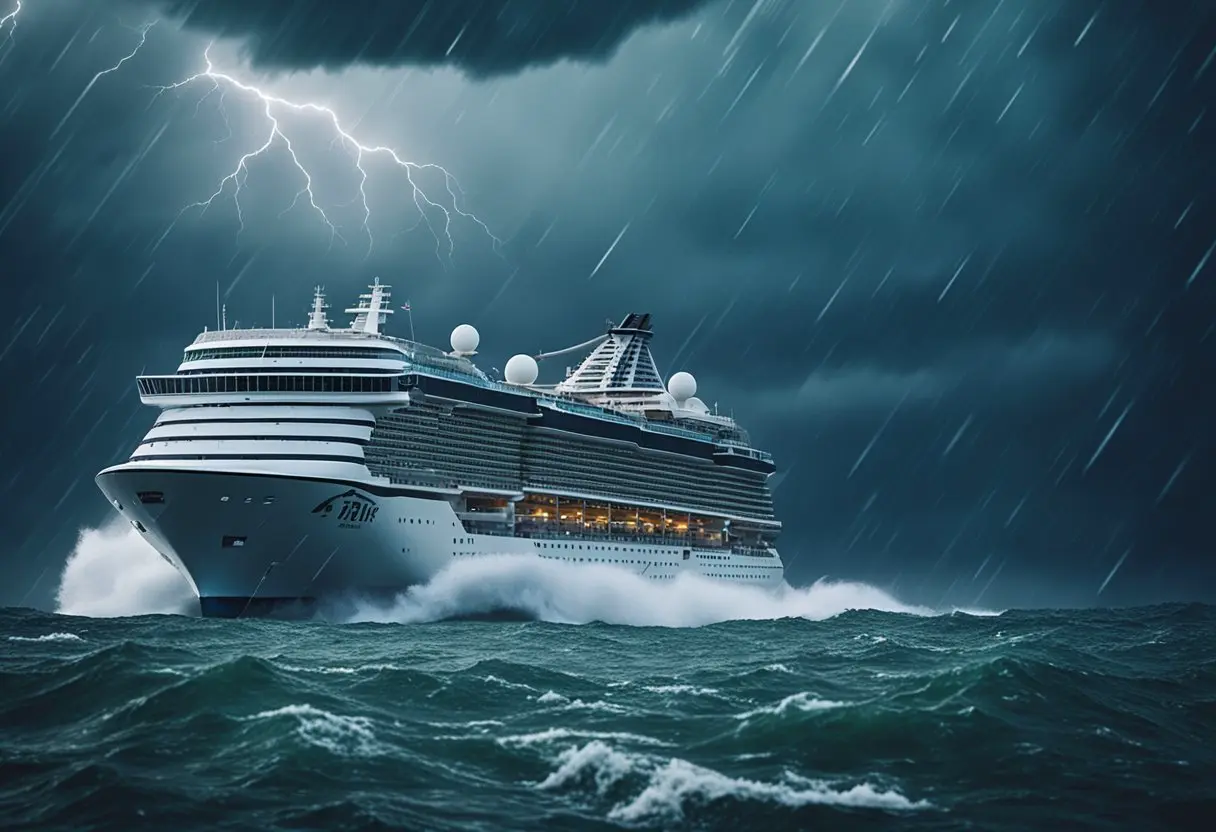Cruising is a popular vacation choice for many people looking to explore different parts of the world while enjoying the comfort and luxury of a floating hotel. While cruise ships are designed to be equipped to handle most weather conditions, weather can still have a significant impact on cruise travel. From rough seas to hurricanes, weather can cause itinerary changes, delays, and even cancellations.
One of the most common weather-related issues that can impact cruise travel is rough seas. High winds and waves can cause discomfort for passengers and crew members, leading to itinerary changes or delays. In some cases, rough seas can even cause damage to the ship, which may require repairs and result in canceled or delayed sailings. Additionally, hurricanes and tropical storms can also have a significant impact on cruise travel, as cruise lines may need to reroute or cancel sailings to avoid dangerous weather conditions.
Despite the potential impact of weather on cruise travel, cruise lines take several measures to ensure the safety and comfort of their passengers. This includes monitoring weather conditions regularly and making itinerary changes when necessary to avoid dangerous weather conditions. Additionally, cruise ships are designed to be equipped to handle most weather conditions, with advanced navigation and stabilization technology. Overall, while weather can impact cruise travel, cruise lines take steps to minimize the impact and ensure a safe and enjoyable experience for their passengers.
Fundamentals of Cruise Travel and Weather

Understanding Cruise Itineraries
Cruise itineraries are carefully planned and designed to provide passengers with the best possible experience. They are often crafted around specific destinations and landmarks, to provide passengers with a glimpse of different cultures and ways of life. However, cruise itineraries can be affected by weather conditions, which can lead to changes in the planned schedule.
Cruise lines are aware of the importance of itinerary planning, and they take various steps to ensure that passengers are informed about any changes that may occur. For example, they may provide passengers with a detailed itinerary before the cruise, which outlines the ports of call and any planned activities. They may also have a designated staff member who is responsible for communicating any changes to the itinerary.
Weather Patterns and Seasonal Impacts
Weather is an important factor that can impact cruise travel. Different weather patterns can affect different regions, and passengers need to be aware of these patterns before embarking on a cruise. For example, the Caribbean is known for its warm and sunny weather, but it is also prone to hurricanes during the summer months. Similarly, the Mediterranean is known for its mild and sunny weather, but it can experience heavy rain and storms during the winter months.
Cruise lines are aware of the impact that weather can have on their itineraries, and they take steps to minimize any disruptions. For example, they may alter the route of the cruise ship to avoid areas that are known to be affected by bad weather. They may also provide passengers with alternative activities on board the ship if they are unable to disembark at a particular port of call.
Weather-Related Challenges for Cruising

Cruising is a popular way of traveling, but it is not without its challenges. One of the most significant challenges that cruisers face is weather-related issues. The following are some of the weather-related challenges that can affect cruising.
Storms and Hurricanes
Storms and hurricanes are a significant concern for cruise ships. These weather events can cause high winds, heavy rain, and rough seas. Cruise ships can try to avoid these weather events by changing their itinerary or delaying their departure. However, sometimes they cannot avoid them, and they have to sail through the storm or hurricane. In such cases, the captain will take measures to ensure the safety of the passengers and the crew. These measures may include changing the ship’s course, reducing speed, or even canceling the cruise.
High Winds and Waves
High winds and waves can also cause problems for cruise ships. These weather conditions can make it difficult for the ship to maintain its course and speed. The ship may also experience more motion, which can cause discomfort and even seasickness among passengers. In some cases, high winds and waves can also cause damage to the ship, such as broken windows or furniture.
Fog and Visibility Issues
Fog and visibility issues can be a significant problem for cruise ships, especially in areas with heavy fog. These weather conditions can make it difficult for the captain to navigate the ship safely. Sometimes, the ship may have to reduce its speed or even stop until the fog clears. This can cause delays and may even result in the cancellation of ports of call.
In summary, weather-related challenges can be a significant concern for cruise ships. Storms and hurricanes, high winds and waves, and fog and visibility issues can all cause problems for the ship and its passengers. However, cruise ships have measures in place to ensure the safety and comfort of their passengers and crew in these situations.
Safety and Risk Management on Cruises
Cruise lines have safety and risk management protocols in place to ensure the safety of their passengers and crew. These protocols include evacuation procedures, onboard safety protocols, and cruise ship stabilization technologies.
Evacuation Procedures
In case of an emergency, cruise ships have evacuation procedures in place to ensure the safe evacuation of all passengers and crew. These procedures include lifeboat drills, muster stations, and emergency alarms.
Lifeboat drills are mandatory for all passengers and crew and are conducted at the beginning of each cruise. During the drill, passengers are instructed on how to use life jackets and how to board the lifeboats. Muster stations are designated areas where passengers and crew gather in case of an emergency. Emergency alarms are located throughout the ship and are used to alert passengers and crew in case of an emergency.
Onboard Safety Protocols
Cruise lines have onboard safety protocols in place to ensure the safety of their passengers and crew. These protocols include fire safety, medical emergencies, and security procedures.
Fire safety protocols include fire suppression systems, smoke detectors, and fire alarms. Medical emergencies are handled by onboard medical staff and include medical facilities and emergency medical equipment. Security procedures include passenger and crew screening, surveillance cameras, and security personnel.
Cruise Ship Stabilization Technologies
Cruise ships are equipped with stabilization technologies to reduce the impact of rough seas on the ship. These technologies include stabilizers, ballast systems, and trim systems.
Stabilizers are fins located on the sides of the ship that help to reduce the rolling motion of the ship. Ballast systems are used to adjust the weight distribution of the ship to help maintain stability. Trim systems are used to adjust the angle of the ship to help reduce the impact of waves on the ship.
Overall, cruise lines take safety and risk management seriously and have protocols in place to ensure the safety of their passengers and crew.
Passenger Experience and Comfort

Cruise travel is an exciting way to explore the world, but weather conditions can impact the passenger experience and comfort. When the weather is unfavorable, cruise companies must make adjustments to ensure the safety and well-being of passengers and crew members.
Indoor Entertainment Alternatives
When the weather is bad, passengers may not be able to enjoy outdoor activities such as swimming or sunbathing. Cruise companies must provide alternative entertainment options to keep passengers occupied and satisfied. Indoor activities such as movies, shows, and games can help passengers stay entertained while they wait for the weather to improve.
Adjustments to Outdoor Activities
In the event of bad weather, cruise companies may need to adjust or cancel outdoor activities to ensure passenger safety. For example, the company may cancel water sports or shore excursions if there is a risk of high winds or rough seas. This can be disappointing for passengers who are looking forward to these activities, but it is necessary to ensure their safety.
Impact on Dining and Catering Services
Bad weather can also impact dining and catering services on board. For example, if the ship is experiencing rough seas, it may be difficult for the kitchen staff to prepare and serve food. In this case, the company may need to adjust the menu or dining times to ensure that passengers still receive quality meals. Additionally, if the ship is forced to change course due to weather conditions, the company may need to adjust its catering plans to account for the change in itinerary.
Overall, weather conditions can impact the passenger experience and comfort on a cruise. However, cruise companies are well-equipped to make adjustments to ensure the safety and satisfaction of their passengers. By providing alternative entertainment options, adjusting outdoor activities, and adapting dining and catering services, cruise companies can mitigate the impact of bad weather on their passengers.
Operational Adjustments for Cruise Lines
Cruise travel is a popular way for people to explore the world leisurely, but weather can have a significant impact on the itinerary. To ensure the safety and comfort of passengers and crew, cruise lines may need to make operational adjustments to their routes and schedules.
Route Alterations
Cruise lines monitor weather patterns and forecasts closely to determine if they need to adjust their planned routes. If a storm or other weather event is predicted to occur in a particular area, the cruise line may alter the ship’s course to avoid the danger. In some cases, this may mean sailing to a different destination or spending more time at sea until the weather clears.
Port of Call Changes
In addition to altering the route, cruise lines may need to change the scheduled ports of call. If a port is in the path of a storm or experiencing severe weather conditions, the ship may need to bypass the port and sail directly to the next destination. Alternatively, the cruise line may choose to substitute a different port of call that is not impacted by the weather.
Communication with Passengers
When weather impacts a cruise itinerary, it can be frustrating for passengers who may have been looking forward to visiting a particular destination. To minimize the inconvenience, cruise lines typically communicate regularly with passengers to keep them informed of any changes to the itinerary. This may include providing updates on the weather conditions and explaining the reasons for any operational adjustments.
Overall, operational adjustments are a necessary part of cruise travel when weather impacts the itinerary. Cruise lines prioritize the safety and comfort of their passengers and crew, and making these adjustments is one way they can ensure a positive experience for everyone on board.
Economic Implications
Cruise travel is a significant contributor to the economy, generating billions of dollars in revenue and supporting thousands of jobs. However, weather-related delays and damages can have a significant impact on the industry’s economic performance.
Cost of Weather-Related Delays and Damages
When a cruise ship is delayed or rerouted due to severe weather conditions, it can result in significant costs for the cruise line. These costs include fuel, food, and other expenses associated with the extended journey. In addition, the cruise line may be required to compensate passengers for missed ports of call or other itinerary changes.
According to a report by the Cruise Lines International Association (CLIA), the direct expenses of the cruise industry in the United States amounted to about $23.9 billion. Weather-related delays and damages can increase these costs significantly, impacting the industry’s bottom line.
Insurance and Compensation Issues
Cruise lines typically carry insurance to cover damages caused by weather-related incidents. However, the extent of coverage may vary depending on the specific policy and the circumstances of the incident. In some cases, the cruise line may be required to pay out of pocket to cover damages or compensate passengers.
Passengers may also have their insurance policies that cover travel disruptions caused by severe weather. However, these policies may have limitations or exclusions that could impact the amount of compensation they receive.
Overall, weather-related incidents can have a significant economic impact on the cruise industry. Cruise lines must carefully manage their risk and ensure they have adequate insurance coverage to mitigate the financial impact of severe weather conditions.
Environmental Considerations

Cruise travel has a significant impact on the environment. As such, cruise lines need to take steps to reduce their environmental footprint. This section will discuss two environmental considerations when it comes to cruise travel: eco-friendly cruise initiatives and the impact of weather on marine ecosystems.
Eco-Friendly Cruise Initiatives
Cruise lines have implemented several eco-friendly initiatives to reduce their impact on the environment. For example, some cruise lines have installed advanced wastewater treatment systems to reduce the amount of pollutants that are discharged into the ocean. Others have implemented energy-efficient lighting and HVAC systems to reduce their energy consumption.
In addition, some cruise lines have committed to reducing their use of single-use plastics. For example, Royal Caribbean has pledged to eliminate plastic straws by 2020, and Norwegian Cruise Line has eliminated plastic straws, stirrers, and bags across its fleet.
Weather Impact on Marine Ecosystems
The weather can have a significant impact on marine ecosystems. For example, hurricanes and tropical storms can cause significant damage to coral reefs and other marine habitats. In addition, heavy rainfall can lead to increased runoff, which can result in higher levels of pollutants in the ocean.
Cruise lines must consider these weather-related impacts when planning their itineraries. For example, if a hurricane is forecasted to hit a particular area, the cruise line may need to alter its itinerary to avoid the storm. Similarly, if heavy rainfall is forecasted, the cruise line may need to adjust its wastewater treatment processes to ensure that pollutants are not discharged into the ocean.
In conclusion, cruise lines need to consider the environmental impact of their operations. By implementing eco-friendly initiatives and considering weather-related impacts, cruise lines can help reduce their impact on the environment and protect marine ecosystems.
Related Posts:
